#1870 campaign
Text
Roll Call: 1870s Adventurer Edition
Josephine "Josie" Doyle, Old West Gunslinger
Player: Skylarynn [Yours Truly]
Mark of Handling Human
Outlander background
Level 7 Gunslinger Fighter
Born on the Western Frontier to an American cowboy and a Mexican senorita, Josie grew up a bit more rough-and-tumble than other young 'ladies' her age. After a monster attack that cost her her eye and her family their lives, leaving Josie irrevocably changed in more ways than one, she finds herself called to battle the eldritch under the guidance of someone - or something - that calls itself Damocles.

Basil Morgan, Victorian Gentleman Thief
Player: Sage
Mark of Finding Human
Noble background
Level 1 Rogue/Level 7 College of Eloquence Bard
Born in the more refined upper crust of Victorian society, Basil has become a remittance man - a younger son with no hope of inheritance sent away to America and paid a small allowance to stay out of trouble. Basil being Basil, however, tends to walk headlong into trouble anyway, and when he meets a one-eyed lady gunslinger [Josie] haunted by danger at every step, Basil does exactly what his family would forbid and runs headfirst into peril by her side.

Kojiro Mori, Disgraced Former Samurai
Player: Kai
Mark of Sentinel Human
Haunted One background
Level 9 Samurai Fighter
Raised in the hallowed traditions of the Japanese warrior caste, Kojiro's world is now falling apart as the Meiji reign takes over, making the caste - and Kojiro himself - obsolete relics of an older time. Then, when crossing the Pacific to request aid from samurai descendants in Mexico goes horribly wrong, Kojiro spirals into an existential crisis as he questions the futility of his original quest when something as unstoppable and unforgiving as the Sleeper in the Deep exists.

Lafayette Chastain, Elderly French Pirate
Player: Lawrence [Sage's dad]
Variant Human
Sailor background
Level 15 Swashbuckler Rogue
Decades ago, Lafayette was a charismatic young privateer at sea in the Caribbean, adventuring with fearless abandon in a world of excitement and opportunity. Now, he spends most of his time in various bars and saloons across America, regaling fellow patrons with embellished tales of his exploits as he seeks one last adventure; a man who has outlived his destiny.
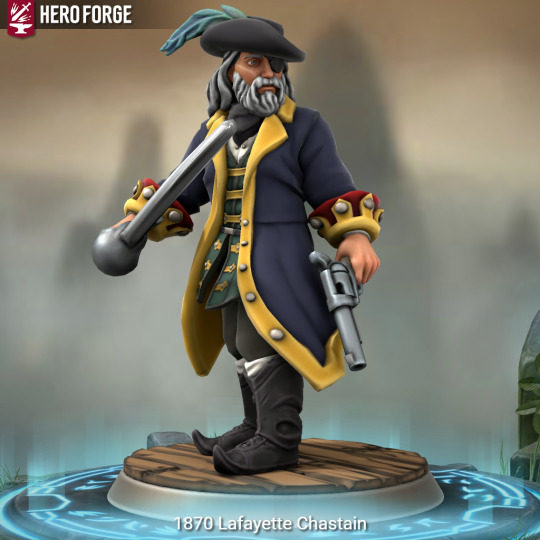
Dominique Escharra-Romero, Spanish Catholic Priest
Player: Damien
Mark of Passage Human
Acolyte background
Level 6 Celestial Warlock
Charismatic, devout, and ambitious, Dominique was a rising star in the Church of his homeland Spain - which may be why his contemporaries shipped him overseas to serve in Mexico where he was no longer a threat to their careers. Ever-unflappable, Dominique took the transference in stride and immediately began thriving in his new position; though perhaps that has to do with his newfound powers of healing that he ascribes to the divine.

Izel Maria Torres, Aztec-Descended Druid
Player: Iris
Plane Shift[?] Human
Courtier background [might be wrong on that one]
Level 4 Circle of the Primeval Druid/Level 2 Grave Domain Cleric
Born first a daughter of the people and baptized a daughter of the Lord, Izel is as much a child of the native Nahua of Mexico as she is a child of God. Despite the struggles of living in two very different worlds, Izel has successfully bridged the two cultures in her life, reconciling her 'pagan' attunement to nature and the wild with her faith in Christ under the proud tutelage of Father Dominique.

Gideon Ross, Union Veteran Sniper
Player: Gavin [Matt's older brother]
Plane Shift Human
Marine background
Level 12 Renegade Fighter
Already a veteran of the Mexican-American War, Gideon was not eager to fight again until his only son Jesse died for his country in a Confederate ambush. Once the war was over and the Confederacy crushed, Gideon migrated westward, roughing it out in the wilderness.

Boris Starkov, Russian Cossack Deserter
Player: Barry
Variant Human
Soldier background
Level 3 Cavalier Fighter/Level 5 Oath of Devotion Paladin/Level 1 Great Old One Warlock
Boris has always trod the path of the loyal and faithful soldier, but that was shattered when his superiors left his unit to die while they fled. Forever changed, Boris hunts eldritch things wherever he travels, pushed ever onwards by the mysterious Pythia.

Carmen de Oliveira, Brazilian Escaped Slave
Player: Cameron
Variant Human
Urchin background
Level 7 Way of the Capoerista [Drunken Master] Monk
Life on the Brazilian plantations was arduous, exhausting, and abusive, but Carmen has finally broken away and escaped to freedom. Fleeing bounty hunters and slave catchers alike, Carmen makes her way to Mexico to start anew.

Alina Reiter, Austrian Noble Refugee
Player: Alison [Cameron's younger sister]
Variant Human
Courtier background
Level 6 Phoenix Soul Sorcerer
Scion of an ancient and powerful family of shadow sorcerers, Alina's potent and blinding magic is unique, to say the least. But now that her brother Aleksander has taken his role as leader of the family, Alina has absconded into the night, knowing that she cannot let her magic remain in their hands.

#dnd5e#dnd#dungeons and dragons#josie doyle#josephine doyle#basil morgan#kojiro mori#lafayette chastain#dominique escharra-romero#izel maria torres#gideon ross#boris starkov#carmen de oliveira#alina reiter#izel torres#1870 campaign
4 notes
·
View notes
Note
8 and 9 for the ask game, mayhaps??
8. Fic that is near and dear to your heart? ♡
9. Top three fics you’ve written (in author’s opinion)? ♡♡♡
So because of the way my brain is wired and how I rotate through hyperfixations, 8 kinda depends on what I'm currently stuck on. I think at the moment I would say the Welcome Westward project if we're sticking to fanfic, which is the project where I was crafting this vast interconnected wild west story out of over thirty movies and tv shows [not all of which were westerns]. The @skylarynns-silverado sideblog is sorta dedicated to that project, though there's some notes about it on the @skylarynns-scribbles sideblog.
If we are talking about original fiction too though I think it'd be my Haven project, which is the mid-high fantasy project I started some seven years ago based on a dream I had and one of the very few projects I have that isn't ultimately based on a preexisting piece of media. There's still stuff I pull from inspiring sources [I may or may not have imported main characters from The Witcher into it, for example] but the actual story and plot and how things work in that world I consider to be mostly just my ideas. This is the project I'm currently working on, and which the @haven-and-all-else blog is theoretically for.
Regarding top three fics I've written, I have to say firstly that none of them are finished and few of them are published anywhere. But I think I'd pick the aforementioned Welcome Westward project, the Mortal Regalia project, and either Haven if we're allowing original fiction or All Things Fantastical if we're sticking to fanfic [for a given definition of fanfic admittedly]. The 1870 Campaign @skylarynns-1870 is also one I'm fond of but it's formatted strangely and not quite what I'd call a fic.
Also I'm more than happy to answer follow-up questions about these projects if anyone is curious.
Thanks for the ask!
#kindlythevoid#ask#skylarynn speaks#1870 campaign#haven#welcome westward#mortal regalia#all things fantastical
1 note
·
View note
Text

Zur Erinnerung an die ruhmreichen Feldzüge.
0 notes
Text
Gallery Collection 001

Published: 2-21-2024 | Updated: N/A
SUMMARY
This is the first in a series of upcoming investment objects for Sims 2 – things your sims can use to generate income over time. From 1975-2000, Anheuser-Busch, Inc. commissioned 30 paintings of African kings and queens for an extended outreach and marketing campaign. This set of paintings features artwork from this amazing series. Celebrate Black History Month 2024! #co2bhm #bhm2024 #sims2bhm.
*No copyright infringement intended – I own no rights to these images.


DETAILS
Requires Sims 2. Requires Apartment Life for shiftability.
§1K-15K | Buy > Deco > Wall Hangings
Paintings are centered on 1-tile but cover more tiles than that. They come in various gallery sizes and images have been edited to fit the mesh. After purchase, their value increases by approximately 2% daily – watch out for burglars!
Files with “MESH” in their name are REQUIRED. Frame recolors include EA/Maxis and yeti textures. Frame and painting recolors are merged into two files so you’ll have to take them or leave them.
ITEMS
Great Kings & Queens of Africa: Paintings 001-006 (92-764 poly)
DOWNLOAD (choose one)
from SFS | from MEGA


IMAGES
Akhenaton Pharaoh of Egypt (1375-1358 BC) by Barbara Higgins Bond
Alfonso I King of the Kongo (circa 1486-1543) by Carl Owens (1929-2002)
Askia Muhammaed Toure King of Songhay (1493-1529) by Leo Dillon
Benhanzin Hossu Bowelle—The King Shark (1841-1906) by Thomas Blackshear II
Cleopatra VII Queen of Egypt (69-30 BC) by Ann Marshall
Hannibal Ruler of Carthage (247-183 BC) by Charles Lilly
Hatshepsut The Ablest Queen of Far Antiquity (1503-1482 BC) by Dean Mitchell
Idris Alooma Sultan of Bornu (1580-1617) by Charles Lilly (1949-)
Ja Ja King of the Opobo (1821-1891) by Jonathan Knight
Khama III The Good King of Bechuanaland (1819-1923) by Carl Owens
Makeda Queen of Sheba (960 BC) by Debra Edgerton
Mansa Kankan Musa King of Mali (1306-1337) by Barbara Higgins Bond
Menelek II King of Kings of Abyssinia (1844-1913) by Dow Miller
Moshoeshoe King of Batsutoland (circa 1786-1870) by Jerry Pinkney
Mwana Ngana Ndumba Tembo—Ruler of the Angolan Tchokwe (1840-1880 circa) by Kenneth Calvert
Nandi Queen of Zululand (1778-1826 AD) by HM Rahsaan Fort II
Nefertari Nubian Queen of Egypt (192-1225 BC) by Steve Clay
Nehanda of Zimbabwe (1862-1898) by Lydia Thompson
Nzingha—Amazon Queen of Matambo (1582-1663) by Dorothy Carter
Osei Tutu King of Asante (circa 1650-1717) by Alfred Smith
Queen Amina of Zaria (1588-1589) by Floyd Cooper
Samory Toure The Black Napoleon of the Sudan (1830-1900) by Ezra Tucker
Shaka-King of the Zulus (1787-1828) by Paul Collins
Shamba Bolongongo African King of Peace (1600-1620) by Roy LaGrone
Sunni Ali Beer King of Songhay (circa 1442-1492) by Leo Dillon
Taharqa King of Nubia (710-664 BC) by John Thomas Biggers
Tenkamenin King of Ghana (1037-1075 AD) by Alexander Bostic
Thutmose III Pharaoh of Egypt (753-712 BC) by Antonio Wade
Tiye The Nubian Queen of Egypt (circa 1415-1340 BC) by Leonard Jenkins
Yaa Asantewa Queen of Ghana (1863-1923) by Barbara Higgins Bond
CREDITS
No copyright infringement intended – I own no rights to these images. Artwork and trademarks are the property of their respective creators and/or owners. If this exceeds fair use, please contact me via private message.
Thanks: Simming and Sketchfab Communities. Sources: Any Color You Like (CuriousB, 2010), Beyno (Korn via BBFonts), Console Certificates (d_dgjdhh, 2019; 2011), EA/Maxis, Gyeongbokgung Sajeongjeon Painting (National Heritage Administration, 2024 via CCA; Sketchfab), Great Kings and Queens of Africa Series (Anheuser-Busch, Inc., 1975-2000; Kentake, 2016), Offuturistic Infographic (Freepik), Painting by Zdzislaw Beksinski (Sosnowski, 2018 via CCA), Yeti Metals (Shastakiss, 2017).
76 notes
·
View notes
Text
Rilla of Ingleside created a new timeline...
Anne's House of Dreams mentioned a historical event - a federal election: “Mistress Blythe, the Liberals are in with a sweeping majority. After eighteen years of Tory mismanagement this down-trodden country is going to have a chance at last.” (AHoD).
From Wikipedia: "The 1896 Canadian federal election was held on June 23, 1896, to elect members of the House of Commons of Canada of the 8th Parliament of Canada. Though the Conservative Party, led by Prime Minister Charles Tupper, won a plurality of the popular vote, the Liberal Party, led by Wilfrid Laurier, won the majority of seats to form the next government. The election ended 18 years of Conservative rule."
It wouldn't be surprsing, but... it was also the year in which Jem Blythe was born! The election took place few weeks after his birth: "When Anne came downstairs again, the Island, as well as all Canada, was in the throes of a campaign preceding a general election." (AHoD).
So... according to this timeline, Walter was born a year later (1897), then the twins (1899), Shirley (1901) and Rilla (1903).
The point is... at the outbreak of the war, Walter would have been only 17 years old, the twins 15, Shirley 13, Rilla 11...
Shirley would have been too young to participate in the war and Walter would have barely turned nineteen at the time of the Battle of Flers-Courcelette in September of 1916...
Someone in one of my older posts noticed that puff sleeves fashion suggested that Anne of Green Gables took place in 1880s rather than 1870s... so it would make sense!
I wonder why Montgomery chose Rilla as her teenage heroine (according to the original chronology, Rilla should have been only 11 years old), while there were 15-year-old twins...
Can you imagine Nan and Di as the main characters of the war book? Two young girls at Queen's, trying to come to terms with rapidly changing world? Rilla and Shirley at Ingleside, growing closer in such trying times? Teenage boys - Jem and Walter - who had to choose if they wanted to sacrifice their life at even younger age - at eighteen? Walter, never reaching the age of twenty (or maybe - dare I hope - coming back home safely)? Anne and Gilbert in their 40s, trying to collect all the broken pieces that was once their family?
It would have been equally good, in my opinion. I wonder... why Montgomery felt she had to suddenly change a whole chronology?
Side note: of course, I love Rilla of Ingleside. But I am just curious... (Nan and Di of Ingleside would be a good book, too!).
@diario-de-gilbert-blythe @gogandmagog @pinkenamelheart @valancystirling48
64 notes
·
View notes
Text
Time to talk about James Garfield! He's nearly forgotten today because his presidency was cut so short, but he might be one of the biggest over-achievers ever to reach the White House, and I'm overdue to tell you about his life story.
James Garfield, like Lincoln, came from a dirt poor background. Pretty sure he was the last president to be born in a log cabin. His father was a farmer who died when he was three years old, leaving him in the care of a mother and older brother who doted on him. They recognized that he was smart and wanted him to make something of himself, but young James had read a few too many books that romanticized life at sea, so at sixteen he ran away from home to get the closest possible version of that experience that he could manage--working on a boat in the Erie Canal. He came back home within a few months because he nearly drowned, and by then, his mother and brother had scraped up enough money for him to go to school.
After high school, he went to a prep school where he worked as a janitor to pay for his tuition. At least, for the first year. By his second year, the school decided to hire him to teach six classes! And later added two more because he was so popular! While he was still attending the school as a student, mind you! He went to college, became the principal of his old prep school, studied for the bar and became a lawyer, got involved in state politics, and then left to go serve in the Civil War, where he became the youngest-ever major general. Then his friends asked him to run for the US House of Representatives, and even though he refused to leave the army to go campaign, he won the election. Then he did leave the army to join the House, where he served eight terms.
Which brings us to the 1880 presidential election. Which was an absolutely wild and crazy political battle within the Republican Party. The big issue was civil service reform. Up to this point, all federal employees were appointed by the ruling president's party--it was called the spoils system, because "to the victor go the spoils." The president (or whoever he gave hiring power to) could appoint whoever he wanted to any government position, regardless of whether or not the person had any relevant experience. By the 1870s, this system had become a cesspool of corruption and cronyism, but the Republicans were split on the need for reform. On one side, you had the Stalwarts, who wanted to continue with business as usual. On the other side were the Half-Breeds, who wanted to replace the spoils system with a merit-based system where employees would have to meet certain education or experience requirements to get the job, which they could then stay in regardless of which party was in power.
Anyway, when it came time to choose the presidential candidate, the battle got ugly. On one side, you had Senator Roscoe Conkling of New York, a political boss who maintained his power through the spoils system, who was there to nominate Ulysses S. Grant to a third term. On the other side, you had James G. Blaine (the Magnetic Man from Maine), a Half-Breed who'd been Conkling's archnemesis ever since he called him out on the Senate floor as a seedy, ruthless villain.
James Garfield had no interest in being president; he'd seen too many of his friends (including James Blaine) get their principles warped by their obsession with the presidency, and he wanted to stay well away from all that. He was there to nominate John Sherman (younger brother of a certain famous Civil War general). Sherman, for his part, knew that Garfield was the more popular politician from Ohio, and hoped to neutralize him as a potential competitor by asking him to give the nominating speech.
So anyhow, at the nominating convention, Conkling gives this rousing speech in support of Grant that has the crowd going wild. There’s no way Garfield's going to be able to follow that. So what he does is look at the crowd and calmly talk to them about how there may be a lot of noise and emotion here today, but this isn't where the election is going to be won. Votes are going to be cast by ordinary Americans living on their homes and farms with their families, and they need to know that there's someone who can serve their interests in the White House. The crowd is spellbound. Garfield then asks them, "What do we want?" To Garfield's horror, one guy yells out, "We want Garfield!"
Garfield made it clear he was there to nominate Sherman, and finished his speech. Then the voting began. Round after round after round of voting, with no one candidate getting enough votes to win the nomination. Garfield got one vote in the third round. In the thirty-fourth round, he suddenly got seventeen votes, as delegates desperate to escape the gridlock decided to throw some votes behind a different name. Garfield stood to protest, saying that no one had the right to vote for him since he hadn't consented to be nominated, but the president of the convention, who secretly liked Garfield more than any of the other candidates, told him to sit down.
By the thirty-sixth vote, Garfield won the nomination. He reluctantly accepted.
When Garfield won the presidential election, it was the first time since the Civil War that a president had been elected who had support in both the North and South. Garfield was seen as a man of the people, living proof of the American dream that any man, no matter how lowly, could one day rise to become president. As Garfield rode in the carriage toward the White House for his inauguration, a man in the crowd yelled out, "Low bridge!" as a reference to Garfield's now-legendary past as a canal worker; Garfield grinned, took off his hat, and ducked.
Once he became president, Garfield became embroiled in the war over civil service reform. Since it hadn't been reformed, he had a constant stream of office-seekers coming to beg for appointments to federal positions, and a lot of federal positions that needed to be filled. His archnemesis was Roscoe Conkling; Garfield was determined to enact civil service reform, and Conkling wanted to do all in his power to prevent it. Conkling forced Stalwart members of Garfield's Cabinet to resign, and he went to war with Garfield over the filling of federal positions.
And that's an interesting story, but the more important part of the battle was with another person entirely, who Garfield had never met. Charles Guiteau was a madman with a checkered past, who'd been involved in strange sex cults and in running various scams--mostly running out on rent payments. During Garfield's election, he gave one speech in support of Garfield to a tiny crowd, and Guiteau, in his delusion, thought that under the spoils system, this entitled him to a reward. He wanted to be a foreign ambassador, and he came to the White House every day seeking a meeting with someone who could give him the job. He was mostly stopped by Garfield's secretary, and his attempts to get help from the vice president and various Cabinet members also failed.
At last, Guiteau became frustrated, and decided that the only thing to do was kill Garfield. God wanted to maintain the spoils system, he thought, and the only way to do that was to get the reform-minded Garfield out of the way so the spoils system advocate Chester Arthur could be president. Guiteau tracked the president to a couple of spots in Washington, but always found a reason not to take a shot.
But on July 2, 1881, when Garfield was at a Washington train station, Guiteau shot him in the back. The bullet went past Garfield's spine and lodged in his pancreas. Robert Lincoln--who happened to be traveling with Garfield--secured the services of the doctor who had treated his father. The wound was examined--the doctor poking unsterilized fingers into the bullet hole--and Garfield was transferred back to the White House for treatment.
If the bullet had been left alone, Garfield would most likely have made a full recovery--nothing about the wound was fatal. Unfortunately, he was president of the United States, and doctors were determined to give him intense medical care--which meant that he died through medical malpractice. The head doctor thought these new-fangled ideas about "germs" and "sterile procedure" were conspiracy theories, and certainly not worth the extra work of sterilizing everything. The wound was repeatedly probed with fingers and unsterilized instruments, which led to a massive infection that spread through Garfield's whole body.
Alexander Graham Bell invented a medical detector to locate the bullet; it would have worked, but Garfield's doctors--convinced they knew the path the bullet had taken--only allowed Bell to scan the right side of Garfield's body--and the bullet was on the left.
Garfield was unable to keep down solid food. He dropped from 210 lbs to 130 lbs. Massive pockets of pus formed throughout his body. He was literally rotting from the inside. Yet by all accounts, Garfield remained cheerful and kind to everyone who cared for him.
Garfield was a healthy fifty-year-old man, and he rallied a few times, but he wasn't able to overcome the infection. The heat and humidity of Washington only made it worse. An air-conditioning device was invented and installed to keep the room cool, but at the beginning of September, the decision was made to transfer Garfield to a house at the New Jersey seaside, in the hopes that the cool sea breezes could aid his recovery.
Garfield left Washington on September 6. A special train line was constructed that took him right up to the door of the house; when the train got stuck on the final hill, a crowd of hundreds that had gathered in support of the president worked together to push it to the top. Garfield's final few days were spent in the pleasant seaside atmosphere, but it was of no use. Garfield died on September 19, 1881. The country plunged into mourning--this president with so much promise, this man of the people, was dead, only six months into his presidency.
That short term means that Garfield is mostly skipped over in American history classes today, but he absolutely should not be. His rise from poverty to the White House is inspiring, and his death is tragic. There is so much to his story, and it's a shame that it gets shuffled aside in the grand sweep of American history.
#history is awesome#presidential talk#i know i've talked about a good chunk of this before#and i've gone on rather too much at length here#but i wanted to post something for the anniversary of his death#and added in a few more details than necessary to make up for the fact that i'm repeating a bunch here#(i just had to include the 'low bridge' story because before that point he was kind of rubbing me the wrong way)#(he's just a little *too much*)#(but that anecdote was the point where i started to like him)
152 notes
·
View notes
Text
I finally have time to talk about Lone Trail. I will be focusing on its depiction of science, technology and its progress. Will get a bit political, but funnily enough less than I imagined.
The thing that called my attention most in Lone Trail were the discussions on the nature of scientific progress. This is a theme that’s dear to me and the stuff I research about. It’s easy to think of scientific progress like an inevitable march forward, like an escalator. After all, we are much richer than we were before, right? Go to OurWorldInData dot org to play around with economic statistics in time – make sure to check the World GDP chart, from year 0 to 2000 and see it taking off like a rocket from year 1700.
What kind of Uncle Ted fan or neoluddite would go against that? Haha…hah…
Truth is that, although its effects are there, it’s not a clear if this is the little, neat process techbros want us to believe. It’s new and produces more, therefore it’s good, right? I could be writing this as a new wave of AI-generated NFTs pollute my algorithm.
That’s what makes the storytelling in Arknights so effective: it mashes together fantasy and sci-fi to really tell stories on the role of beliefs, technology, science and religion. The Rhine Lab saga is definitely an exploration of technology, with focus on the equivalent of the United States. During the period before the First World War, 1870-1913 (which is the one that Arknights draws most from), the world underwent through the so-called Second Industrial Revolution and I’ve read economic historians considering it the most innovative period in human history. I mean, obviously, there is an absolute number of inventions in our current age, but in relative terms 1870-1913 experienced a much larger number relative to the previous one.
The escalator narrative constructs scientific achievements as work of daring people (mostly men, but there were women like Marie Cuire), that combined science and technology to help mankind, like Prometheus giving mankind fire from the gods (in fact, one of these books is even named “Prometheus Unbound”); more than often they have to fight against the establishment. Remember Ignaz von Semmelweis? He just wanted doctors to wash their hands. Even I learned this standard narrative in the university. But that’s not the entire story.
The positivistic paradigm – of a science free of value judgements, made with the power of math – has actually helped build this escalator narrative. In reality, some scientists and scholars are horrible people. Later, I learned that Semmelweis, as much as he campaigned for the right thing, was a very arrogant person, who abused everyone around him, to the point few people went to his funeral.
Narratives focusing on one single hero are easy to sell and the ones building them are always on the lookout. Remember how ten years ago, a lot of people tried to push the narrative Elon Musk was going to create a new industrial revolution? Nowadays he’s just an arrogant loser who keeps dragging on his midlife crisis. The 1880s also had similar people like that, such as Thomas Edison.
Kristen Wright is definitely better than them both, because she is actually an engineering genius. But she’s also just like them, in the sense of unethical experiments, collusion with the military-industrial complex and being an overall superficially charismatic, but rotten to the core person. And she’s surrounded by a lot of people like Parvis and Ferdinand.
Breaking this line of reason, I have to say how much I hate Nietzsche’s ubermensch and master-slave morality, I hate Great Men theory, I hate Ayn Rand; these people are sheep who think themselves wolves. And before you say that Nietzsche didn’t consider himself an ubermensch, well, neither did Parvis and his reasoning was the same. For every person fancying themselves ubermensch, there’s a lot of those whom he’d call untermensch to clean up their messes. You have no idea of how times I stumbled upon people (especially libertarians) that advocate lower barriers to regulations that were written in blood, so that progress can happen quicker. Creative destruction works, as long as some people get “creative” and others clean the “destruction”. Deaths and injuries? Acceptable, just give them a pension (but fight tooth and nail in the court to not do it beyond the barest of the bare minimum, because it’ll lower the shareholder profit in 0.01%). Increase in inequality? Nobody will care in a few years, it’ll make everything cheaper anyway (look up Baumol’s cost disease to see how wrong that statement is, without being incorrect). I’m not exaggerating, sometimes the people saying that don’t even bother lacing it in politically correct language.
Because Lone Trail showed it “worked” – Kristen Wright broke off the ceiling over Terra and that will have consequences (especially with Endfield coming closer). The data from her experiments will advance science, the sight of a broken ceiling will inspire artists and prompt politicians to act. Was it worth it? Well, it will depend on who you ask (like, Ifrit or Rosmontis would have strong feelings), but it’s just there now. Serious history isn’t kind on this question as well – many technologies have a lot of transgressions, both legal and ethical, in their supply chain (both the American and Soviet space program come to my mind – guess who helped them); the difference between an entrepreneur and a criminal are contextual, because both are finding new opportunities of profit and both interlock frequently.
In the end, anyone can put an equation that has its uses, not mattering if it’s a good person or not. But that is no excuse to find good ethical practices. Silence saw everything with her own eyes and I’m really glad she’s leading the initiative for a more ethical science in Columbia – especially because people who are willing to break moral rules tend also to be willing to break research rules (this is why the “research” made in concentration camps is actually useless, it didn’t respect experimental rules). So I’m really glad for the Arknights writers for understanding these nuances and communicating them to the audience through one of the best stories of the game.
55 notes
·
View notes
Note
original anon here tysm for the recs ! if the marxist frameworks was too limiting im also completely fine w general postcolonial botany readings on the topic :0
A Spiteful Campaign: Agriculture, Forests, and Administering the Environment in Imperial Singapore and Malaya (2022). Barnard, Timothy P. & Joanna W. C. Lee. Environmental History Volume: 27 Issue: 3 Pages: 467-490. DOI: 10.1086/719685
Planting Empire, Cultivating Subjects: British Malaya, 1786–1941 (2018). Lynn Hollen Lees
The Plantation Paradigm: Colonial Agronomy, African Farmers, and the Global Cocoa Boom, 1870s--1940s (2014). Ross, Corey. Journal of Global History Volume: 9 Issue: 1 Pages: 49-71. DOI: 10.1017/S1740022813000491
Cultivating “Care”: Colonial Botany and the Moral Lives of Oil Palm at the Twentieth Century’s Turn (2022). Alice Rudge. Comparative Studies in Society and History Volume: 64 Issue: 4 Pages: 878-909. DOI: 10.1017/S0010417522000354
Pacific Forests: A History of Resource Control and Contest in Solomon Islands, c. 1800-1997 (2000). Bennett, Judith A.
Thomas Potts of Canterbury: Colonist and Conservationist (2020). Star, Paul
Colonialism and Green Science: History of Colonial Scientific Forestry in South India, 1820--1920 (2012). Kumar, V. M. Ravi. Indian Journal of History of Science Volume: 47 Issue 2 Pages: 241-259
Plantation Botany: Slavery and the Infrastructure of Government Science in the St. Vincent Botanic Garden, 1765–1820 (2021). Williams, J'Nese. Berichte zur Wissenschaftsgeschichte Volume: 44 Issue: 2 Pages: 137-158. DOI: 10.1002/bewi.202100011
Angel in the House, Angel in the Scientific Empire: Women and Colonial Botany During the Eighteenth and Nineteenth Centuries (2020). Hong, Jiang. Notes and Records: The Royal Society Journal of the History of Science Volume: 75 Issue: 3 Pages: 415-438. DOI: 10.1098/rsnr.2020.0046
From Ethnobotany to Emancipation: Slaves, Plant Knowledge, and Gardens on Eighteenth-Century Isle de France (2019). Brixius, Dorit. History of Science Volume: 58 Issue: 1 Pages: 51-75. DOI: 10.1177/0073275319835431
African Oil Palms, Colonial Socioecological Transformation and the Making of an Afro-Brazilian Landscape in Bahia, Brazil (2015). Watkins, Case. Environment and History Volume: 21 Issue: 1 Pages: 13-42. DOI: 10.3197/096734015X14183179969700
The East India Company and the Natural World (2015). Ed. Damodaran, Vinita; Winterbottom, Anna; Lester, Alan
Colonising Plants in Bihar (1760-1950): Tobacco Betwixt Indigo and Sugarcane (2014). Kerkhoff, Kathinka Sinha
Science in the Service of Colonial Agro-Industrialism: The Case of Cinchona Cultivation in the Dutch and British East Indies, 1852--1900 (2014). Hoogte, Arjo Roersch van der & Pieters, Toine. Studies in History and Philosophy of Science Part C: Studies in History and Philosophy of Biological and Biomedical Sciences Volume: 47 Issue: Part A Pages: 12-22
Trading Nature: Tahitians, Europeans, and Ecological Exchange (2010). Newell, Jennifer
The Colonial Machine: French Science and Overseas Expansion in the Old Regime (2011). McClellan, James E. & Regourd, François
Colonial Botany: Science, Commerce, and Politics in the Early Modern World (2005). Ed. Schiebinger, Londa L. & Swan, Claudia
Plants and Empire: Colonial Bioprospecting in the Atlantic World (2004). Schiebinger, Londa L.
89 notes
·
View notes
Text

The Great Binge: The Drug-Fuelled “Belle Epoque”
The Belle Époque or La Belle Époque; French for "Beautiful Epoch" is a period of history, usually considered to begin around 1871–1880 and to end with the outbreak of World War I in 1914. It was a period characterized by optimism, peace, economic prosperity, colonial expansion, and technological, scientific, and cultural innovations. In this era of France's cultural and artistic climate (particularly within Paris), the arts markedly flourished, and numerous masterpieces of literature, music, theatre, and visual art gained extensive recognition.

The Bar At Maxim's, Vintage Artwork By Pierre-Victor Galland
The Great Binge refers to the same period spanning 1870 to 1914 in North America. It was coined by modern historian Gradus Protus van der Belt to describe a time when drugs like cocaine, heroin, opium, absinthe, laudanum, and many more were freely available not just from your local pharmacy, tobaconists or the neighbourhood bar, but also from the barbershop, the stationers, and even confectioners.

Morphine by Albert Matignon - 1905

Georges Moreau de Tours - Les Morphinees The Morphine Takers - 1886
Between 1827 and 1842, over 27,000 pounds of opium came into the ports of the United States alone, where the drug found an unexpected distribution network of businessmen, presidential parents, and even Ivy League schools, which all had ties to the Opium trade in the late 19th century.

The Illustrated London News print of the clipper steamship Ly-ee-moon, built for the opium trade, c. 1859
“Princeton’s first large benefactor, John Green, funded his contribution through the opium trade […] Yale University’s infamous Skull and Bone society was funded by the most successful family of opium dealers in America,” reveals Harvard’s magazine, The Crimson, adding that as America’s gateway institution for the drug that soon spread to other Ivy Leagues along the East Coast, “Opium once pervaded campus life at Harvard […] throughout the 1800s, its black smoke kept the university’s veins flowing with green and its faculty and students perpetually dazed.”

The term “pipe dream” actually originates from the opium dens of turn of the century America where people smoking an opium pipe would come up with ideas, theories and fantasies whilst hallucinating.

In 1908, President Roosevelt appointed Hamilton Wright as the first Opium Commissioner in the United States to begin targeting opium dealers. The irony here is that Franklin D. Roosevelt’s grandfather, Warren Delano, was an opium peddler, and his drug trade was responsible for the bulk of the family’s fortune. Roosevelt’s mother, Sara Delano, travelled to Hong Kong with her family to join her opium-trading father in the 1860s.
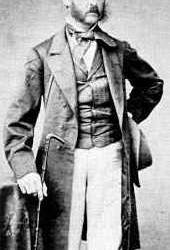
Warren Delano (FDR's grandfather & Opium King)

Sara (FDR's mother) & Philippe Delano in 1864, following their return home from Hong Kong. (Franklin Roosevelt Library)
The crackdown on the Great Binge inevitably began with the signing of the 1912 International Opium Convention to suppress opium smoking and to limit it to medicinal purposes. In the 1920s, in the US, an anti-drug crusade also saw heroin cough drops and cocaine tablets to slowly disappear from stores and bathroom cabinets.
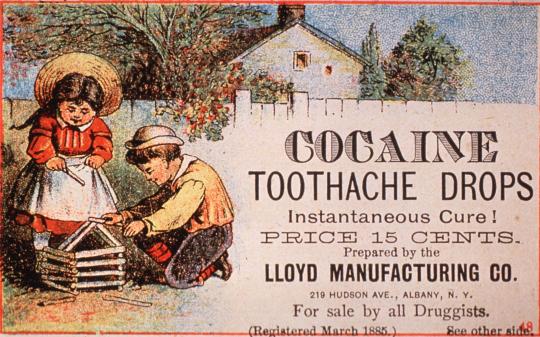
In the 1920s, in the US, an anti-drug crusade also saw heroin cough drops and cocaine tablets to slowly disappear from stores and bathroom cabinets.
During the Great Binge, the most notable drink in circulation was the Vin Mariani, an alcoholic beverage that combined both wine and cocaine.

Angelo Mariani, a French chemist who invented a very popular beverage in 1863.
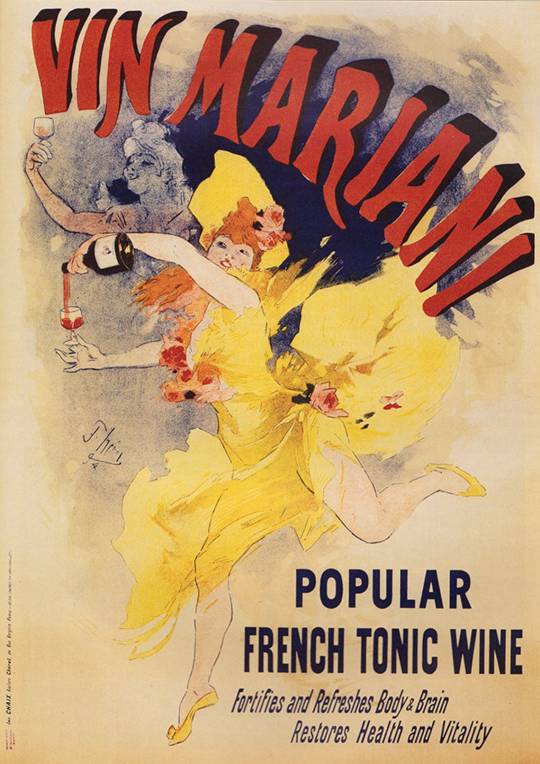
Mariani tonic Wine — lithography by Jules Cheret
The French "Tonic" Wine received endorsements from Pope Leo XIII as well as many of the Belle Epoque’s most famous names, Sarah Bernhardt, Jules Verne and even Queen Victoria were all fans of the drug-infused cocktail.

Pope Leo XIII even allowed his face to be used in Vin Mariani’s marketing campaign. He was very much a brand ambassador, citing that it strengthened him “when prayer was insufficient”.
Mariani's "Tonic" would spent the following century cleaning up its act & rebranding itself to become the world’s most iconic household brand: Coca Cola
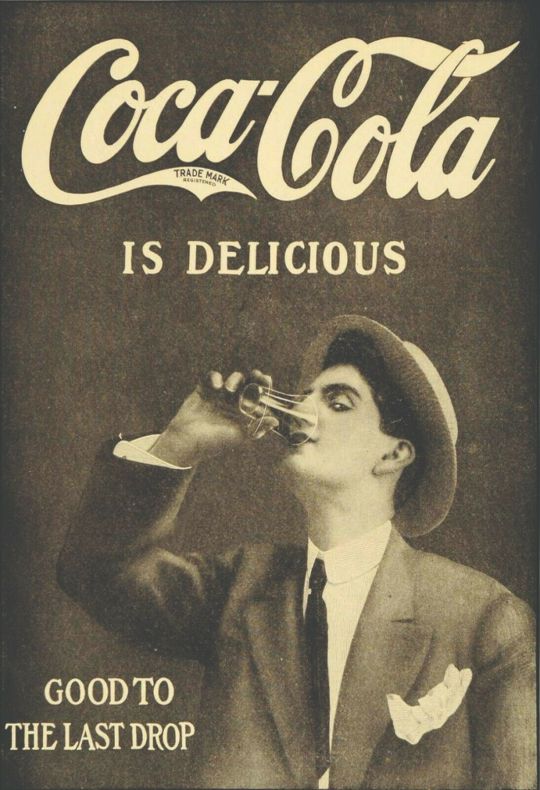
#belle epoque#Beautiful Epoch#paris#Great Binge#cocaine#opium#Morphine#Albert Matignon#Les Morphinees#Georges Moreau de Tours#ivy league schools#Ivy League#Opium trade#princeton#yale#harvard#pipe dream#franklin d. roosevelt#fdr#Warren Delano#Sara Delano#Angelo Mariani#Vin Mariani#Pope Leo XIII#jules verne#queen victoria#coca cola
69 notes
·
View notes
Text
Boris Starkov
Player: Barry
Human Lineage
Custom Upbringing
Soldier Background
Level 3 Cavalier Fighter
Level 5 Oath of Devotion Paladin
Level 1 Serpent Warlock
Eldritch Wounds: 1
Boris has always trod the path of the loyal and faithful soldier, but that was shattered when his superiors left his unit to die while they fled. Forever changed, Boris hunts eldritch things wherever he travels, pushed ever onwards by the mysterious Pythia.

2 notes
·
View notes
Text
Bram Stoker and Irish independence
I keep seeing posts popping up in the Dracula Daily tag about Bram Stoker being Irish, implying that we can draw conclusions from that about his politics, his attitude towards Britain, or the British Empire as a whole. I thought it might be useful to provide a bit of context.
Standard disclaimer: I'm not a historian and this period of Irish history is very complicated. I'm going to do my best but this will be a simplification, because otherwise an already long post would become a novel.
Less-standard disclaimer: I'm only going to go into some of Bram Stoker's views here. Others, such as his egregious racism, obviously also have a bearing on his views on empire... but again, a novel.
A very brief history of Ireland in the 19th century
god i have no idea how to simplify this
OK let's go. At the start of the 19th century, Ireland was a primarily Catholic, Irish-speaking country ruled by a primarily Protestant, English-speaking minority. The bulk of the Irish population faced colonial discrimination in a host of different ways, from restrictions that promoted English trade over Irish trade to laws that restricted Catholics from holding public office. The result was a long series of rebellions and risings against British rule, most recently in 1798. Though there was slow progress towards Catholic emancipation, especially in the 1820s.
In the 1840s, a potato blight affected the Irish staple potato crop. The British response - providing very little in the way of famine relief and continuing to export other crops from Ireland to Britain - turned a natural disaster into a genocide. A million people died and roughly twice that number emigrated. Ireland has yet to recover to its pre-Famine population.
A long-term consequence of the Famine was the decline of the Irish language. Irish-speaking areas were among the worst affected, and by 1900, Ireland was majority English-speaking. Another contributing factor was establishment of National Schools from the 1830s onwards, in which students were prohibited from speaking Irish.
In the second half of the 19th century, different movements arose to address these problems. There were campaigns for land rights, to protect tenant farmers; there was a movement to revive Irish culture and the Irish language; and there were different campaigns for how Ireland should be governed.
Independence was advocated for by groups such as the IRB, who supported taking up arms for complete freedom from the British Empire. Among the landed middle classes who were able to vote, this was a fringe position in the second half of the 19th century.
Home Rule was the idea that Ireland should remain in a union with Britain, under the British Crown, but that an independent Irish government should have complete control over domestic matters. This was the mainstream nationalist position in the late 19th century, and was the position of most of the Liberal Party in the UK.
Unionism was support for the status quo, and opposition to any devolution of power to Ireland. This was the position of the Conservative (Tory) Party in the UK.
In elections in the 1850s, Irish voters (male landowners only) were relatively split between Liberals and Tories. But by the 1870s, even this unrepresentative group of people voted overwhelmingly for the new Home Rule Party and its successor the Irish Parliamentary Party. That remained the majority view of Irish nationalists until WW1.
The leader of the Irish Parliamentary Party, Charles Stewart Parnell, persuaded Liberal PM William Gladstone of the importance of Home Rule. In 1886, Gladstone introduced a Home Rule bill to Parliament, but it was defeated in the House of Commons by 30 votes, causing Gladstone to lose power. In 1890, Parnell was revealed through a divorce case to be in a relationship with a married woman, causing a scandal that split his party. In 1893, after Parnell's death, Gladstone was returned to power and attempted a second Home Rule bill, which passed the Commons but was defeated in the Lords.
And that's the context in which Bram Stoker wrote Dracula.
Bram Stoker's views on Home Rule
The starting point is that we don't know a huge amount about Stoker's views on anything. The Irish Times describes him as "so private we know little of his life." Here's a bit of what we do know.
He was a Protestant from a comfortable middle-class background. Here's where he grew up:

He studied at Trinity College Dublin, which Catholics were barred from attending (by their own leadership) on the grounds that attendance constituted "a moral danger to the faith of Irish Catholics." There, he would have been surrounded by committed Unionists; Trinity was its own parliamentary constituency and voted for Conservative MPs long after the rest of Ireland was supporting Home Rule.
At the same time, he was making friends with nationalists such as John Dillon and described himself as a "philosophical Home Ruler". (Source, which is amazingly comprehensive on the events of Stoker's life).
He must have liked that phrase, because when he wrote his Personal Reminiscences of Henry Irving, published in 1906, he was still using it:
We were all, whatever our political opinions individually, full of the Parnell Manifesto [published 1890 after the divorce scandal and attacking Gladstone] and its many bearings on public life. For myself, though I was a philosophical Home-Ruler, I was very much surprised and both angry at and sorry for Parnell's attitude, and I told Mr. Gladstone my opinion. He said with great earnestness and considerable feeling:
"I am very angry, but I assure you I am even more sorry."
I was pleased to think - and need I say proud also - that Mr. Gladstone seemed to like to talk politics with me...
Above all his admiration for Gladstone, and pride in having him as a friend, shines through in this section.
Different sources interpret what a "philosophical Home-Ruler" is differently. It may be "one who accepted Home Rule as more necessary than ideal" or supporting "Home Rule brought about by peaceful means"; either way, it seems his support for Home Rule was qualified, not full-blooded.
Overall Stoker held a mainstream view, neither adamantly pro-independence nor a defender of the status quo in Ireland. He also seems to have been quite happy to maintain friendships with people who disagreed with him, whether they were Tories or more radically pro-independence.
This is less exciting than takes that I've seen out in the wild, such as "Bram Stoker hated the British Empire and that's why Dracula attacks English people". But it seems to be what the evidence bears out.
96 notes
·
View notes
Text
On Dec 10th, we venerate Elevated Ancestor & Saint Maȟpíya Lúta aka Chief Red Cloud on the 113th anniversary of his passing 🕊 [for our Hoodoos of First Nations descent]

Red Cloud, Chief of the Oglala Sioux, was a political leader, a negotiator of peace, & fierce warrior who fought tirelessly to save his people from colonizer expansion into the midwest.
Maȟpíya Lúta was born near the forks of the Platte River, in what was at the time known as the Nebraska Territory; to his Ogala Lakota mother & Brulé Lakota leader father.
He showed great courage, strength, & leadership in battles against the Oglala's traditional competitors once he came of age; the Pawnees, Crows, Shoshones, & Utes. This ultimately earned him Chiefdom. He also successfully killed the usurper rival to his uncle's political leadership. This divided the Oglala for years to come.
Once European invaders discovered gold in Montana in the 1860s, they began dessimating habitats, sacred lands, & territories to build a road from Fort Laramie in present-day Wyoming to the gold fields. They constructed a series of forts to protect the road from interference, which became known as the Bozeman Trail. In 1865, Chief Red Cloud led the Ogala & their Cheyenne allies into a 2-year war against the colonizers along the Bozeman Trail. They were successful. The soldiers, miners, & others were forced to abandon their operation.
Being the peaceful negotiator that he was, at the end of the war, Chief Red Cloud signed the Second Treaty of Fort Laramie, which bound the U.S. to the promise that it would abandon the Bozeman Trail & return - what is now the western half of South Dakota, along with large parts of Wyoming, & Montana - to Lakota Sioux possession. In return, Red Cloud agreed to end his assault & relocate to a reservation in Nebraska known as the Red Cloud Agency.
In his older age, the great warrior became a diplomat of peace. In 1870s, Chief Red Cloud, along with several other First Nations leaders, traveled to D.C. to meet with U.S. President Grant. He later met with Grant again in 1875, when Grant has the caucasity to offer $25K to the Lakota if they would give up their rights to hunt along the Platte River in the Dakota Territory. Red Cloud, and other leaders, vehemently refused.
While Red Cloud pursued the path of peaceful negotiation & passive tactics, many other Indian leaders (including his own son) wanted to fight for their territory & ways of life. Red Cloud & President Grant sought to avoid war, but it was inevitable. After Sitting Bull's crushing defeat of a U.S. 7th Calvary in June of 1876, Whites began perpetuating aggressively negative campaigns & propaganda against First Nations in the West. Even still, Red Cloud resisted the call to war. He pursued diplomacy. In 1878, he successfully lobbied for the removal of the Indian agent at Pine Ridge Agency due to poor treatment. He returned to D.C. several more times to lobby for his people & defend the rights of all First Nations. This led him to become the most photographed Native of the 19th Century.
Red Cloud continued his work to preserve native lands & to maintain the authority of traditional First Nations leader until he was removed from political power; this may have been influenced by his shifting views in favor colonialism via Christianity & adopted the first name, "John". He later died on the Pine Ridge Agency with his wife; blind & ailing. There he rests in the cemetery so named after him.
"The Whites are the same everywhere. I see them every day. They made us many promises, more than I can remember, but they never kept but one; they promised to take our land, and they took it. " - Chief Red Cloud.
We pour libations & give him💐 today as we celebrate him for his spirit of resistance & immense peace. May we look to him for wise counsel, peaceful resolutions, & as a lesson in the influential power of colonialism.
Offering suggestions: River water, peace pipe, Lakota music, bison meat served with wild potatoes & prairie turnips
‼️Note: offering suggestions are just that & strictly for veneration purposes only. Never attempt to conjure up any spirit or entity without proper divination/Mediumship counsel.‼️
#hoodoo#hoodoos#atr#the hoodoo calendar#ancestor veneration#Elevated Ancestors#Chief Red Cloud#Red cloud#Lakota#First Nations#Plains Indians#Oglala#Oglala Lakota#Lakota Nation
22 notes
·
View notes
Text
Women 👩🏼👩🏾🦰 - late 19th & early 20th century - History
In some the ways the status of women improved during the late 19th and early 20th century...
The custody of children improved after the Caroline Norton case
After Caroline (image of her🔽) separated (she wasn't allowed to divorce) from her violent husband, she was banned from seeing her children.
She wrote pamphlets protesting against the unfair laws, which helped get the Marriage and Divorce Act of 1857 passed - giving women more rights when it came to children and marriage

There were more employment opportunities for women, such as nursing, clerical work, shop work, etc.
Married Women's Property Acts of 1870 & 1882 - improved married women's rights
Cooperative Women's Guild (1884) campaigned for women worker's rights, divorce reform and better schools and pensions
By 1901, some women were allowed to vote in local elections
But in some ways, the position of women in society at the time was still really bad...
Women's legal status was still limited, more so after marriage. The reforms helped, but didn't fully solve the problem
Working women were payed much less than men, conditions for factory work were awful, and women who didn't have a husband/family were exploited
Contraception (deliberate use of artificial methods/techniques to prevent pregnancy after sexual intercourse) was limited & primitive - many women spent much of their adult life pregnant
Giving birth was dangerous at the time - approximately 500 - 1000 women died per 100,000 births
Women's reform groups were seen as a threat - many articles were written against it, dubbing them as the 'New Women'
47 notes
·
View notes
Text


On November 12th 1869 Edinburgh University first admitted women to study medicine.
Sophia Jex-Blake and her friend Edith Pechy were the first to attend the prestigious medical school after much hard campaigning on Sophia's part.
Jex-Blake describes the scene here as the two friends went to take their exams a year later, by which time there were seven female students….they became known as the Edinburgh Seven. I will touch on events here and hopefully pick up on The Surgeons' Hall Riots next week…….
"On the afternoon of Friday 18th November 1870, we walked to the Surgeon's Hall, where the anatomy examination was to be held. As soon as we reached the Surgeon's Hall we saw a dense mob filling up the road… The crowd was sufficient to stop all the traffic for an hour. We walked up to the gates, which remained open until we came within a yard of them, when they were slammed in our faces by a number of young men.".
A sympathetic student emerged from the hall; he opened the gate and ushered the women inside. They took their examination and passed with flying colours. Although both passed, university regulations only allowed medical degrees to be given to men. The British Medical Association therefore refused to register the women as doctors.
Pics aren in pic one, Edith Pechey-Phipson and Sophia Jex-Blake in the second.
21 notes
·
View notes
Text
Overwhelmed By Advertising? The Battle For Cincinnati Consumers Has Raged For More Than A Century
Depending on the source, it is estimated that each American is confronted by 6,000 to 10,000 advertising messages every single day. That immersive media onslaught swelled as we started carrying little video screens around wherever we go, but invasive and obnoxious marketing has bothered Cincinnatians for much more than a century.
For example, on 20 July 1871, a correspondent for the Cincinnati Times related an enjoyable voyage he had undertaken down the Ohio River. After praising the service of his riverboat’s staff, the remarkable scenery along the river, the picturesque little town he floated by, the writer registered one complaint, about a cliff near the town of Hanging Rock:
“High up on the face of this wall of white sandstone, hundreds of feet beyond the reach of a scaling ladder, I noticed a patent medicine advertisement. It was penciled there by a man let down with ropes from above, and the letters are large enough to be read from the deck of a steamer two miles distant. I was sorry to see this defacement. It is bad enough that all the fences throughout the land should be made to lie for patent medicines without debasing the hill-sides with such marking. I suppose that when the ‘chemical affinity necessary to be the motor of some immense flying machine’ shall be discovered, some enterprising patent medicine man will be plastering the face of the moon with some of his ‘wonderful remedies.’”
If only the poor man knew what lay ahead! Even in the 1870s, almost every vertical surface in Cincinnati was slathered with posters, placards and bills advertising shows at the local theaters, patent medicines and political candidates. Cincinnati was the center of the bill-posting world. For one thing, Cincinnati was among the top printing cities of the United States, with the mighty Strobridge Lithographing Company dominating the poster industry.
Also, Billboard magazine was headquartered here in Cincinnati. What we now think of as a music magazine, Billboard was founded in Cincinnati as a trade publication for men who posted “bills” on walls. From its first issue in 1894, Billboard covered the entertainment industry, such as circuses, fairs and burlesque shows, and also created a mail service for travelling entertainers. Initially it covered the advertising and bill-posting trade and was known as Billboard Advertising.
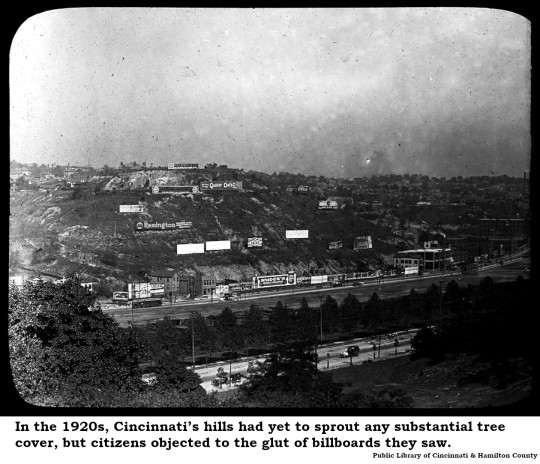
Far from inspiring civic pride, advertising rankled Cincinnati residents as they witnessed visual pollution encrusting the region’s hillsides. Leading the opposition was the Municipal Art Society – a sort of ad-hoc predecessor to today’s Urban Design Review Board. The opening shot was fired 24 August 1896 when the Enquirer reported:
“A matter that will undoubtedly be of interest to the business men is the fact that war has been declared by the Cincinnati Municipal Art Society against advertising signs on fences along the car routes and drives of the city. The art society maintains that these signs mar the beauty of the city, especially in the case of landscape scenes on the hills and in the suburbs, and that they are offensive to the public taste.”
The Society was persistent. It took five years but the Cincinnati Post reported [24 November 1901] that the Baldwin Piano Company had demolished 200 feet of billboards erected on company property along Gilbert Avenue. The Post described this as the “first result” of the Society’s campaign.
The Municipal Art Society was soon joined by some strange bedfellows. The Cincinnati Business Men’s Club, among whose members were certainly a number of advertisers who employed billboards to disseminate their messages, created its own Municipal Art Committee to lobby for restrictions on outdoor advertising. On 1 June 1907, the committee circulated a postcard illustrated with a photo of signage clogging the view from the Grand Central Depot, with the sarcastic caption, “A Nice Welcome To Cincinnati.”
As early as 1895, the city chased the Fountain saloon’s advertising off Fountain Square, but appears not to have drafted a comprehensive law about outdoor advertising until 1909 when, as part of a broader safety ordinance, the city adopted limitations on the size of billboards, their placement near thoroughfares and the materials to be used in their construction.
While the city pondered how to encourage commerce while maintaining attractive views, the entire billboard industry was gaining momentum through a Cincinnati entrepreneur named Philip Morton. Before Morton, “bill boards” were basically fences on which bill posters slapped printed advertisements glued up with a flour-water paste. Morton took outdoor advertising to a new level, according to Jay Gilbert, who has researched his influence on marketing [Cincinnati Magazine September 2016]:
“By 1898 he’d become the Steve Jobs of roadside blight. Doing business as Ph. Morton, Phil was an early pioneer of putting ads into free-standing frames called ‘bill-boards’ and plunking them down everywhere. Eventually every railroad route and motorway in America had its view ruined by a Ph. Morton billboard.”
Even the powerhouse Morton found himself in the city’s crosshairs. Parks Superintendent John W. Rodgers, according to the Enquirer [20 September 1907], exasperated by Morton’s billboards blocking the view of Inwood Park, erupted.
“Park Superintendent Rodgers yesterday tore down over 12,000 feet of big billboards that stretched along for a distance south of Hollister street, facing Vine street, in front of Inwood Park. The billboards were 12 feet high, about 1,000 feet long and contained the advertisements of leading firms of the city, and were illuminated at night with electric lights. They had been at that place for years.”
All of those billboards were leased by Philip Morton who, as coincidence would have it, dropped off a check to pay the lease while workmen were busily engaged demolishing his thousand feet of signage. This was the Boss Cox era in Cincinnati where the right hand was very often ignorant of the left hand’s activity. And so it was, while the Park Superintendent was demolishing billboards on Vine Street, the Board of Public Service pondered a lease for billboards along Gilbert Avenue. That’s right – the same Gilbert Avenue divested of billboards just six years earlier.
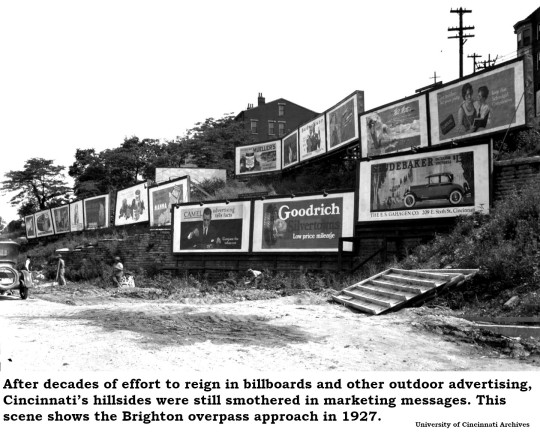
A common theme of cartoon artists at that time was the eventual coverage of all available exterior surfaces with advertising signs and slogans. In response, Cincinnati Post cartoonist Elmer Andrews Bushnell sketched City Hall wrapped from sidewalk to parapet in advertising while George Barnsdale Cox and his minion, August “Garry” Herrmann, happily apply more posters and Mayor Julius Fleischmann hides behind a billboard.
The battle raged for decades. Photographs from 1927 show dozens of billboards crowding the hillside over the Brighton overpass to Central Parkway and the Enquirer [24 March 1929] begged for relief because billboards and other unsightly structures had a negative effect on property values:
“What of the gaudy billboard that intrudes itself into a residential district, the sign which girds the tree or telephone pole, the roadside ‘shack’ which is made more ugly with bizarre advertisements? Do they affect values?”
A century later, we hardly notice billboards anymore. We’re too busy texting while we drive.

10 notes
·
View notes
Text
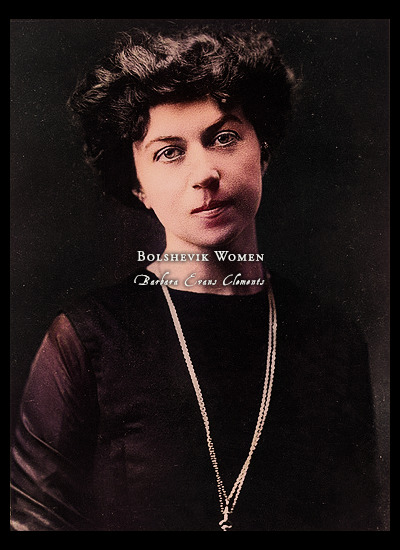
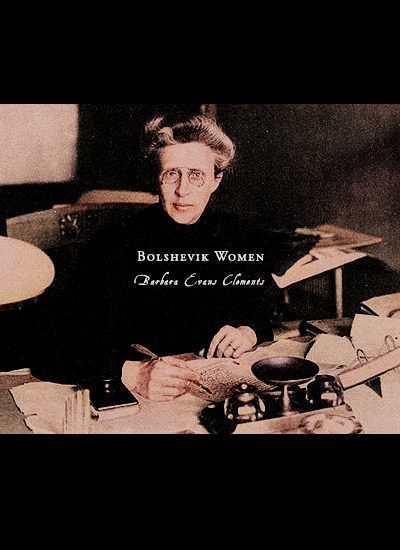
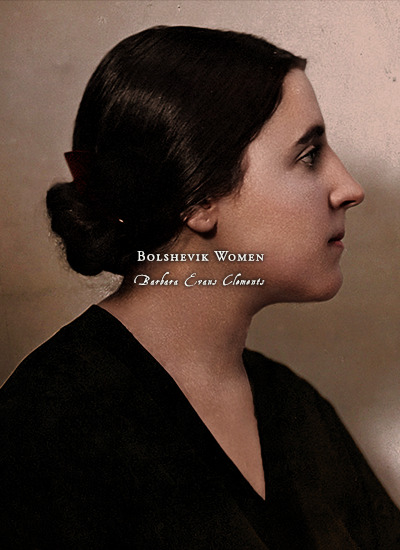
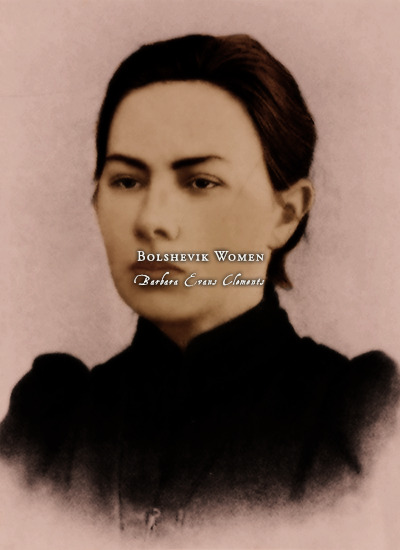
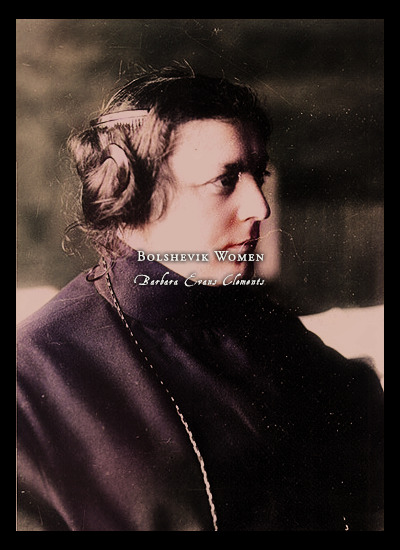
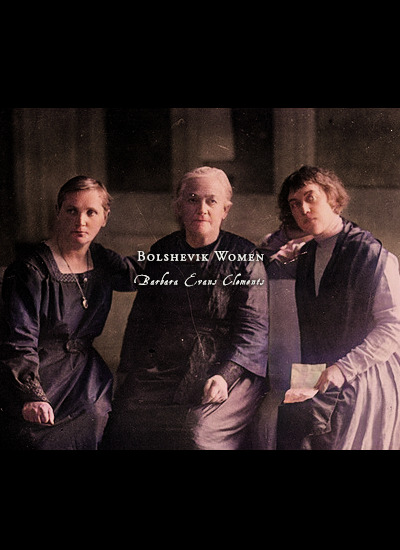
Favorite History Books || Bolshevik Women by Barbara Evans Clements ★★★★☆
There were several thousand Bolshevichki, that is, female Bolsheviks, in the party in March 1917, and more than 30,000 by December 1921. In the mid-1920s, after the organization had renamed itself the Communist Party of the Soviet Union and members had begun to refer to themselves as communists, the term “Bolshevik” came in the USSR to be an honorific, an appellation reserved for those people who had joined the party before 1921. The Bolsheviks were revered as revolutionary liberators and founders of the Soviet Union. Among them was an extraordinary collection of women, the Bolshevichki, who had worked alongside men in all the campaigns responsible for bringing the party to power. For two decades before the fall of the tsar in March 1917 they attempted to foment revolution by printing inflammatory leaflets and assembling bombs. After the tsar fell, they rushed into the milling crowds to become stump speakers and party recruiters (1917-18). During the civil war (1918-21), some of them led soldiers into battle; others began building the institutions of the new order. When at last the civil war was won, the Bolshevichki threw themselves no less energetically into the construction of the Soviet regime, seeing in its establishment the opening of the final chapter in the history of human progress. These tens of thousands of women, the great majority of them born between 1870 and 1900, were lieutenants and foot soldiers within a radical movement that has had enormous importance in the history of the twentieth century.
Only two of them, Alexandra Kollontai, particularly famous as an outspoken advocate for women’s emancipation, and Nadezhda Krupskaia, Lenin’s wife, are well known today; the rest have been mostly forgotten in Russia and abroad. This is unfortunate. In the first place, they deserve serious, detailed historical consideration in their own right, as a substantial and distinctive historical group. Secondly, since many of them were rank-and-file communists, no less involved than their male comrades in sustaining the party organization in its underground years, pushing it to power, defending it during the civil war, and employing it afterwards to build the Soviet system, study of them enhances our understanding of the development of the party as an institution. And thirdly, the Bolshevichki deserve attention because they were important members of a generation of activist women that transformed the situation of women across the European world in the early twentieth century. By leading Soviet efforts to establish political, civil, and economic equality for women, the Bolshevichki figured — though not always entirely willingly or self-consciously — as shock troops in one of the great social battles of the modern era, the attempted revision of ancient gender values and norms.
#historyedit#litedit#bolshevik women#russian history#soviet history#european history#women's history#history#history books#nanshe's graphics
19 notes
·
View notes